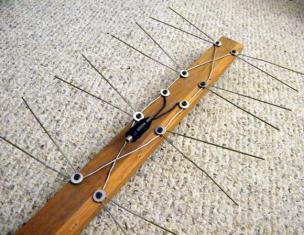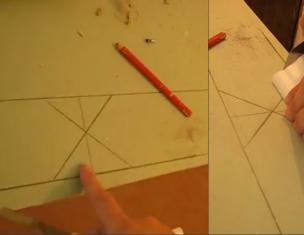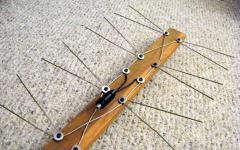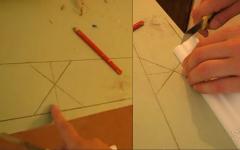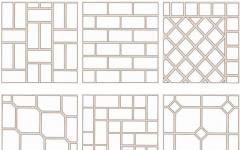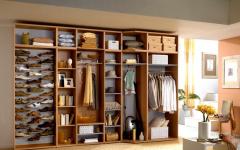Despite the huge number of television antennas on the consumer market, which can be easily purchased at any electronics store, interest in how to make an antenna for a TV with your own hands does not disappear. This interest can be explained by the reluctance to spend money on buying an antenna, being away from retail outlets (if you are in a remote place or in the country) or the failure of a purchased one.
Antennas for a TV receiver can be divided into several types.
All-wave antenna
All-wave TV signal catchers are also called frequency independent (FFA). Their designs can be different.
Of two petals
The figure shows an all-wave antenna made of two metal plates a triangular shape and two wooden slats on which a fan-shaped copper wire is stretched.
Copper wire can be taken of any diameter, it does not play a special role. The ends of the wire are attached at a distance of 20 to 30 mm between each other. Plates with other ends of the wire welded together should be spaced 10 mm apart.
The metal plate can be replaced with a square piece of fiberglass, which has copper foil on one side.
Since the construction of a homemade antenna is square, its height will be equal to the width, and the angle between the canvases is 90 degrees. Zero potential point marked in yellow in the figure. It is not required to solder the cable sheath in this place - a tight tying will be enough.
A two-petal TV signal receiver assembled in this way is capable of receiving both all decimeter and meter channels. Moreover, he is good at picking up the signal in all directions. But if you install the PN in the area of poor signal reception from the TV tower, it will work normally only with an amplifier. Others can be applied.
Butterfly shape
A do-it-yourself TV antenna can be made in the shape of a butterfly. To make this fairly powerful antenna yourself, you need to prepare a plate or plywood with dimensions of 550 x 70 x 5 mm, a wire with a copper core with a cross section of 4 mm, and, accordingly, a PK75 cable.
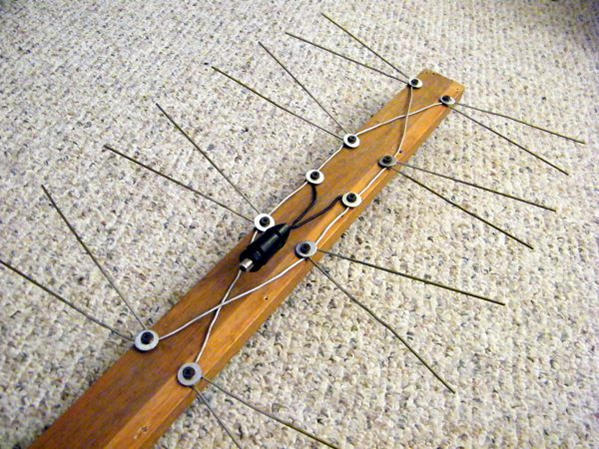
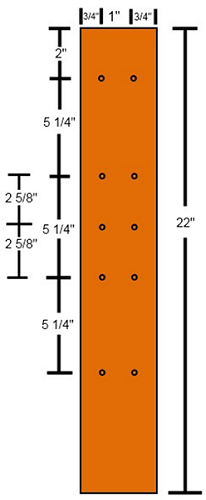
That's all - you made an antenna for the TV with your own hands.
From beer cans
To make such an original PNA, you will need 2 cans (0.5 l or 0.75) of beer or other drink. But before you make a TV antenna, you need to consider some material requirements... Namely, it is recommended to purchase a high-quality television cable with a resistance of 75 ohms per meter. How is it correct? Make sure the center strand is strong and the braid is double and solid.
Do not forget that the longer the cable is, the stronger the signal damping will be, which is especially important for receiving meter waves, in contrast to the UHF, for which the length of the wire also matters, but not so much.
It will also be necessary to prepare a regular wooden trempel, a pair of self-tapping screws, electrical tape or scotch tape and, if possible, a soldering iron with tin.
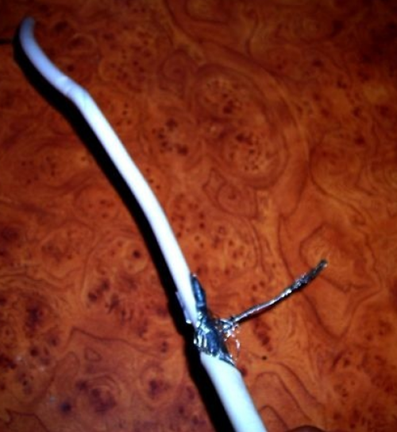
An antenna from beer cans can receive both decimeter wavelengths and meter.
For clarity of the whole process, you can watch the video.
Log-periodic antenna
A log-periodic antenna (LPA) can be used to receive radio waves of both meter and decimeter ranges. To make such a signal receiver, you can use an aluminum tube with a diameter of 10 mm and metal rods (pins), which can be bought at a store where fasteners are sold, as a stand. Ideally, smooth tubes or rods are better than threaded rods. A plastic U-shaped box is taken as a basis.
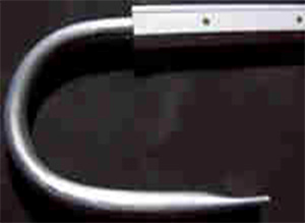
When the soldering is completed, the manufacture of the device can be considered complete and you can start testing your creation.
Decimeter antenna
Homemade decimeter signal catchers can be of different shapes and designs, from the simplest to make to the more complex devices.
Annular
The simplest design for receiving UHF can be done in a short time with your own hands from scrap materials... All you need is a coaxial cable and an appropriately sized piece of plywood.
![]()
Now all this needs to be collected:
- prepare a piece of coaxial cable (PK75) 530 mm long (a ring will be made of it);
- also cut another piece of cable 175 mm long - this will be a loop;
- make a ring (1), solder a loop (2) and a cable (3) that connects to the TV;
- fix all this on a plywood sheet and direct the made TV signal receiver towards the TV tower.
If your TV receiver is using such an antenna, try making a more sophisticated device.
Figure eight
A home antenna for the UHF range with your own hands can be made of wire in the form of a number 8. To make such a receiver, you can use copper or aluminum wire with a diameter of 3 to 5 mm, as well as a cable RK75. During the manufacturing process, you will also need glue gun.
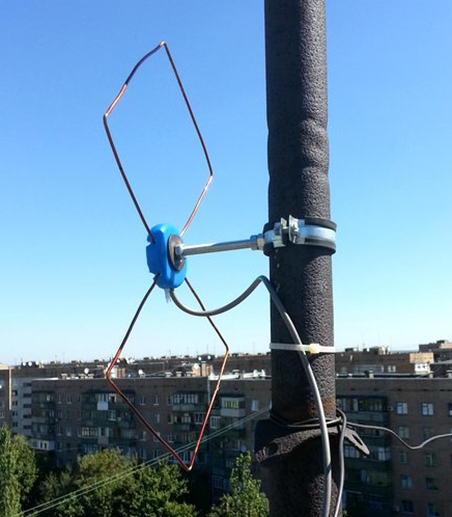
Manufacturing progress.
- Using the wire cutters, you need to cut off 2 pieces of wire, 56 cm each.
- At the ends of each segment, make a loop that should go 1 cm apart.
- Bend the wire squares and connect the loops. Solder the cable to the squares as shown in the figure. The central core is soldered to one square, the braid to the other. The distance between the elements should be 2 cm. The whole structure can be fixed in the lid from under a 20 liter water bottle by filling with glue.
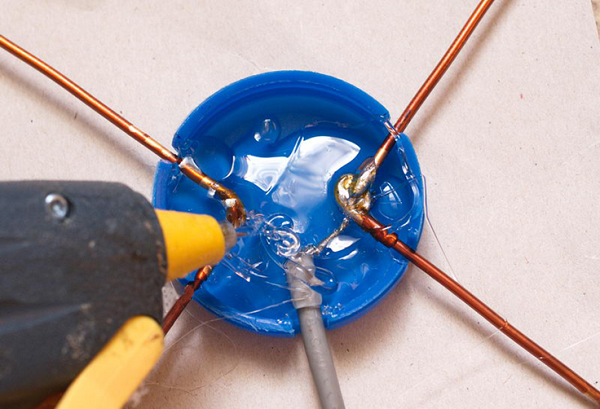
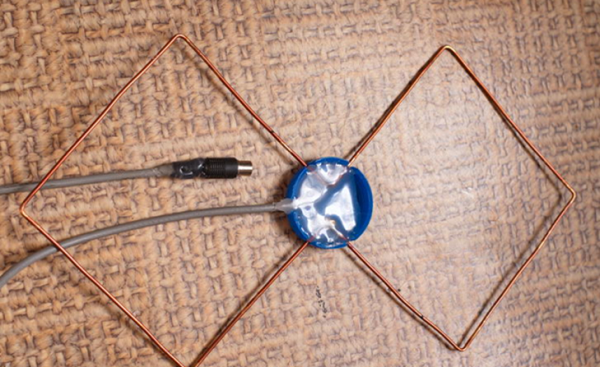
Such a dmv range receiver can be located anywhere, and it does not require an amplifier. Unless, an amplifier may be needed if the device is outdoor, and the cable length will be considerable. In this case, to compensate for signal loss, you will need to install it.
From a metal-plastic pipe
A do-it-yourself TV antenna can be made from an ordinary metal-plastic pipe. This will result in a device for receiving dmv with a possible range from 480 MHz to 1000 MHz. This “model” uses a pipe with a diameter of 16 mm and a cable of 5.5 m. The ring will require 55 cm of pipe, and the rack will need 14 cm, which is equal to a quarter of the wavelength. This serves to better match the outer sheath of the cable and reduces high-frequency currents.
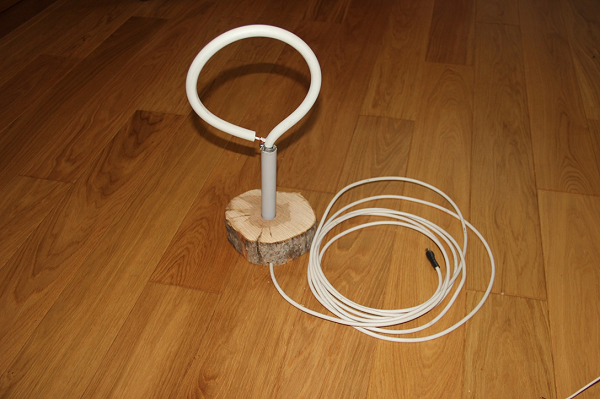
The cable outlet in this design is made through a hole in the pipe. The cable sheath should be fastened with a clamp to the stripped part of the pipe. The central core of the cable is attached to the ring (a screw, washer and nut can be used). Such a homemade product works well as a room antenna in apartments with reinforced concrete walls that poorly transmit a television wave. Thanks to the extended cable, it can be taken out to the balcony or placed on the windowsill - the reception quality will only improve.
In the form of a frame
Another design of the dmv antenna is assembled in the form of a frame. It will be made from aluminum plates(stripes).

Thus, do-it-yourself antennas will help you save money on their purchase, and in some cases get out of the situation when there is a TV, but the standard antenna is out of order, or it is not there at all. Moreover, the quality of reception of homemade products is not worse than factory counterparts. If you do not want to tinker with the device yourself, then the information about being in the store will come in handy.



